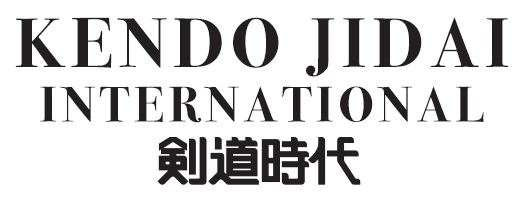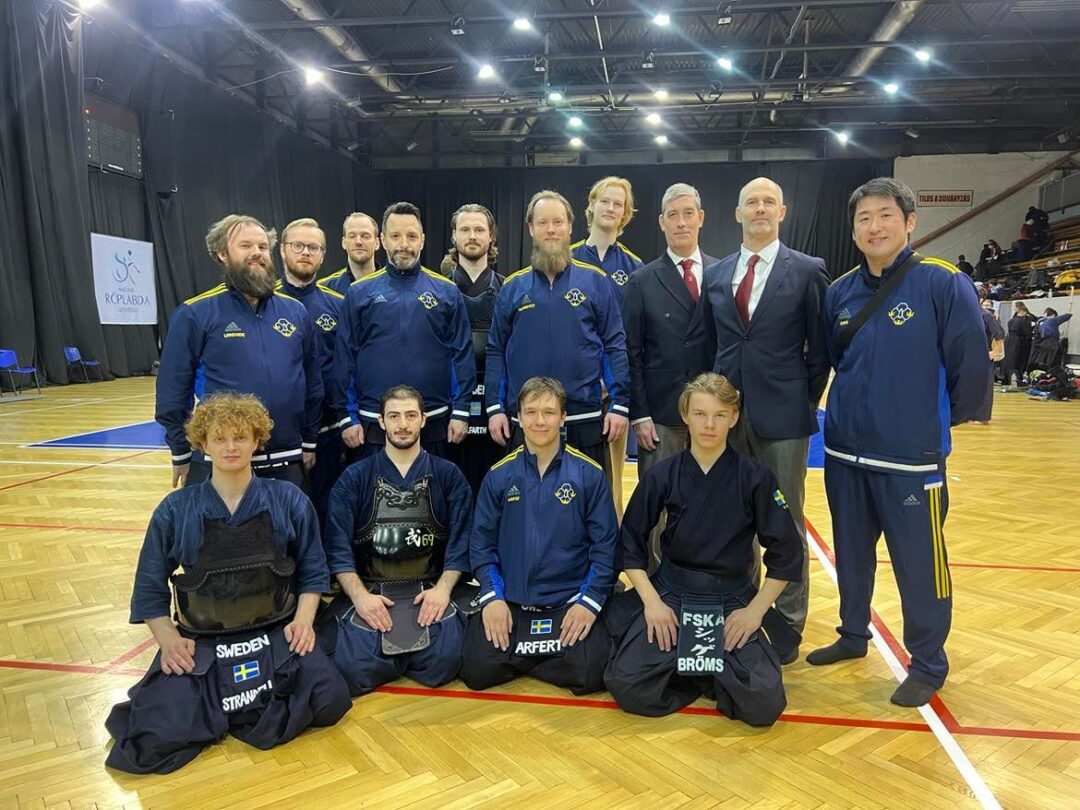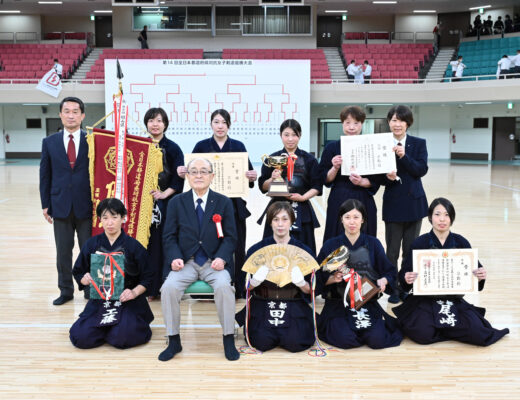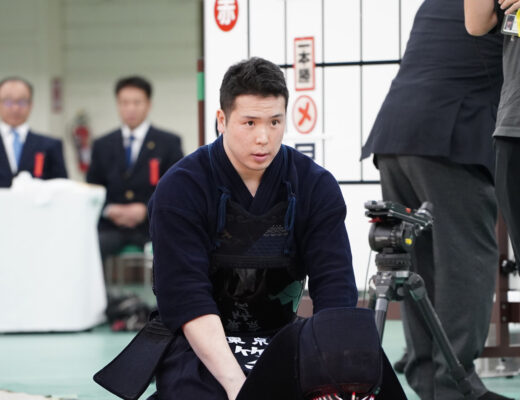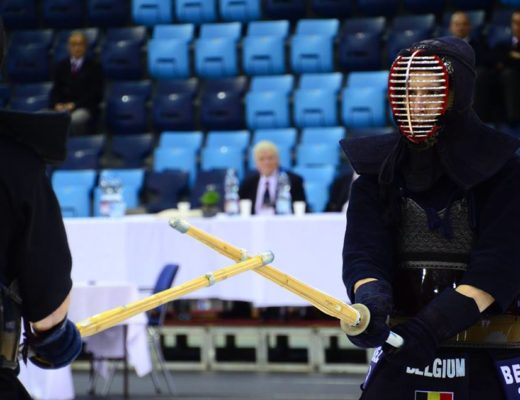My name is Arai Ryo, and I serve as the head coach of the Swedish men’s national Kendo team. Although I am based in Athens, Greece, I have had the opportunity to work with the Swedish national team thanks to a fortunate connection.
Because I live in Athens, I cannot practice with the Swedish players in person very often.
However, through trial and error to achieve results even in such circumstances, we arrived at a system centered on team-concept-sharing meetings and online practices.
After introducing online training, the team reached the quarterfinals in the team competition at the 2023 European Championships, defeated powerhouse Canada at the 2024 World Championships, and saw a men’s individual victory at the 2025 European Championships. Although the progress is gradual, we are starting to feel the results.
In this article, I will introduce the specific initiatives we have undertaken, their effects, areas for improvement, and voices from the players.
Arai Ryo
Born in 1987 in Saitama, Japan. After graduating from Urawa High School, studied at the School of Health and Physical Education, University of Tsukuba, and later completed a master’s program in Physical Education at the Graduate School of Comprehensive Human Sciences, University of Tsukuba.
Competitive achievements include reaching the top 8 in the team category at the Inter-High School Championship, competing in the individual division of the same tournament, participating in the All-Japan High School Invitational Tournament, and appearing in the All-Japan Student Kendo Championship.
Currently based in Athens, Greece, serving as the head coach of the Swedish men’s national Kendo team. Holds the rank of 7th dan in Kendo.
Continuous Sharing of the Team Concept
I took on the role of head coach of the Swedish men’s national team in September 2020. At that time, strict movement restrictions were in place in Sweden due to the COVID-19 pandemic.
Under such circumstances, we began holding online meetings every two weeks. In these meetings, players were asked to watch a video I selected in advance, and I provided explanations and commentary based on that material. The videos we shared mainly focused on topics related to our team concept.
The purpose of these sessions was to communicate the kind of Kendo we aim to pursue as a team and to build a shared understanding among all members.

Usefulness of Online Follow-Ups
When COVID-19 restrictions eased and we were finally able to practice in person with the national team candidates in Sweden around November 2021, I noticed that many of the ideas we had discussed in our meetings were not being put into practice.
It often felt like, “They understand it in their heads, but they’re not actually doing it.” To bridge that gap between knowing and doing, I realized the importance of continuing with the same training focus over a certain period of time.
It was during this period that I began online follow-up sessions with one of the players. While most of the national team candidates live in Stockholm, this particular player resides in Malmö, in the southern part of Sweden.
The club he belonged to had no other national team candidates, and as he was in his mid-30s with a family, finding time for practice was not easy. Still, given his experience and skill, he was someone I strongly wanted to keep on the team, especially considering the situation we were in at the time.
Because he had no training partners during weekday practices in Malmö, we decided that he would train alone while I observed and provided feedback through an online connection. We continued this form of online training for over a year, and he remained one of the core members of the team, supporting us through the World Kendo Championships in 2024.
The positive results we achieved through these online sessions convinced me to expand this approach and apply it to players in other regions as well.
Strengthening the National Team Through Online Training
Online training sessions are held once a week in each region, usually on Sundays. In the past, there were national team candidates in Malmö and Linköping as well, but currently, we conduct online practices in four locations: Stockholm, Uppsala, Skellefteå, and Gotland.
Since I work full-time and am also involved in the activities of a Kendo club in Athens, it is difficult for me to manage sessions on weekdays, so we concentrate our online practices on Sundays.
For conducting the training sessions, we use the video call function on Messenger. In some regions, participants use speakers or large screens, but the basic setup requires nothing more than a single smartphone. I observe the practice through my computer screen and provide feedback and advice in real time as the session progresses.
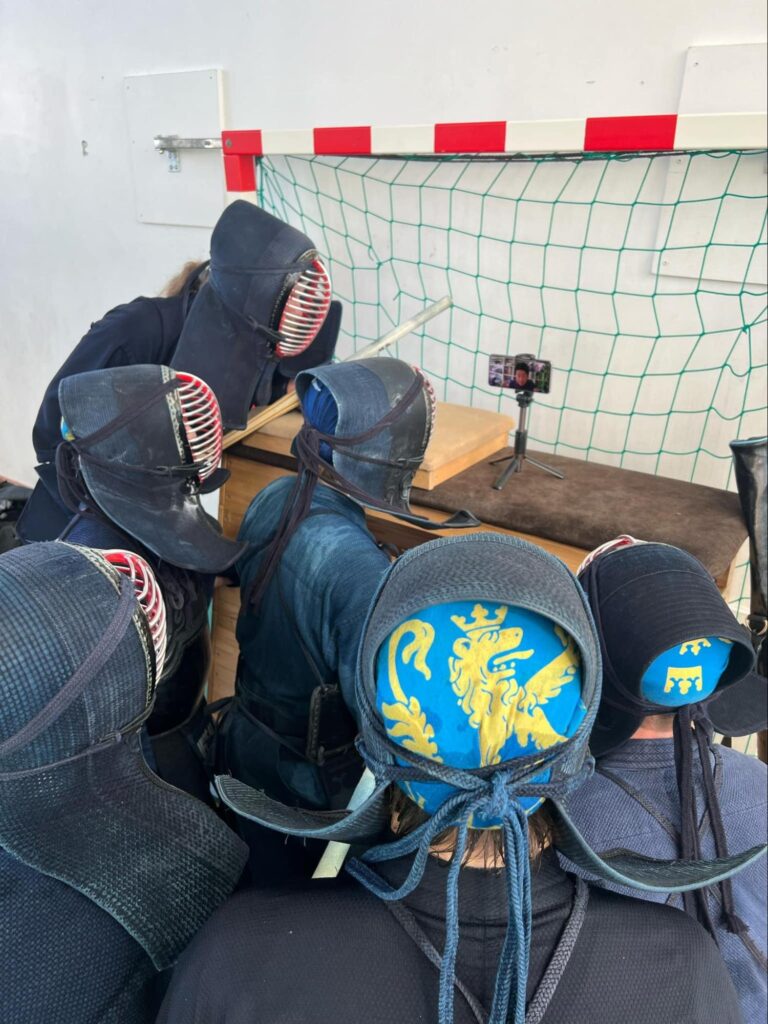
When we first started online training, I personally led sessions for all regions. Currently, however, the sessions in Gotland are overseen by one of the two team captains. He has been part of the team since its formation and has a deep understanding of our team concept. As I will explain later, he and I hold a one-on-one meeting once a week to share information about training and team matters, including updates on the progress of the practices in Gotland.
The group in Stockholm is quite large, and sometimes junior team members or women’s team members also join, bringing the total number of participants to around 20. When the group reaches this size, it becomes impossible to observe everything from a single angle. To address this, we use three smartphones: one for the video call itself, and two others placed at both ends of the dojo for recording. Since I can only observe from one direction during the live session, I review the recorded footage afterward to analyze the practice in detail.
The recorded videos are shared with the entire team, allowing players from other regions to watch them as well. Since candidates outside of Stockholm usually train with members of their own local clubs, being able to see how the national team candidates in Stockholm conduct their practices provides valuable reference and insight.
In regions other than Stockholm, the number of participants is relatively small, so giving instructions during practice is not particularly difficult. However, it can still be challenging to convey precisely how I want them to move using words alone. Watching the videos beforehand helps players form a clear image, making it easier for them to approach the training with the right mindset and understanding.
While Stockholm benefits from having a large group to train with, it is also more difficult to give detailed instructions during practice compared to other regions. To address this, I hold a one-hour meeting every Sunday with the captain who leads the Stockholm sessions. In these meetings, we do more than just check in on the team’s atmosphere. We also discuss areas for improvement for each player and points I want them to focus on during training. This approach reduces the amount of instruction needed during the sessions themselves and helps practices run more smoothly.
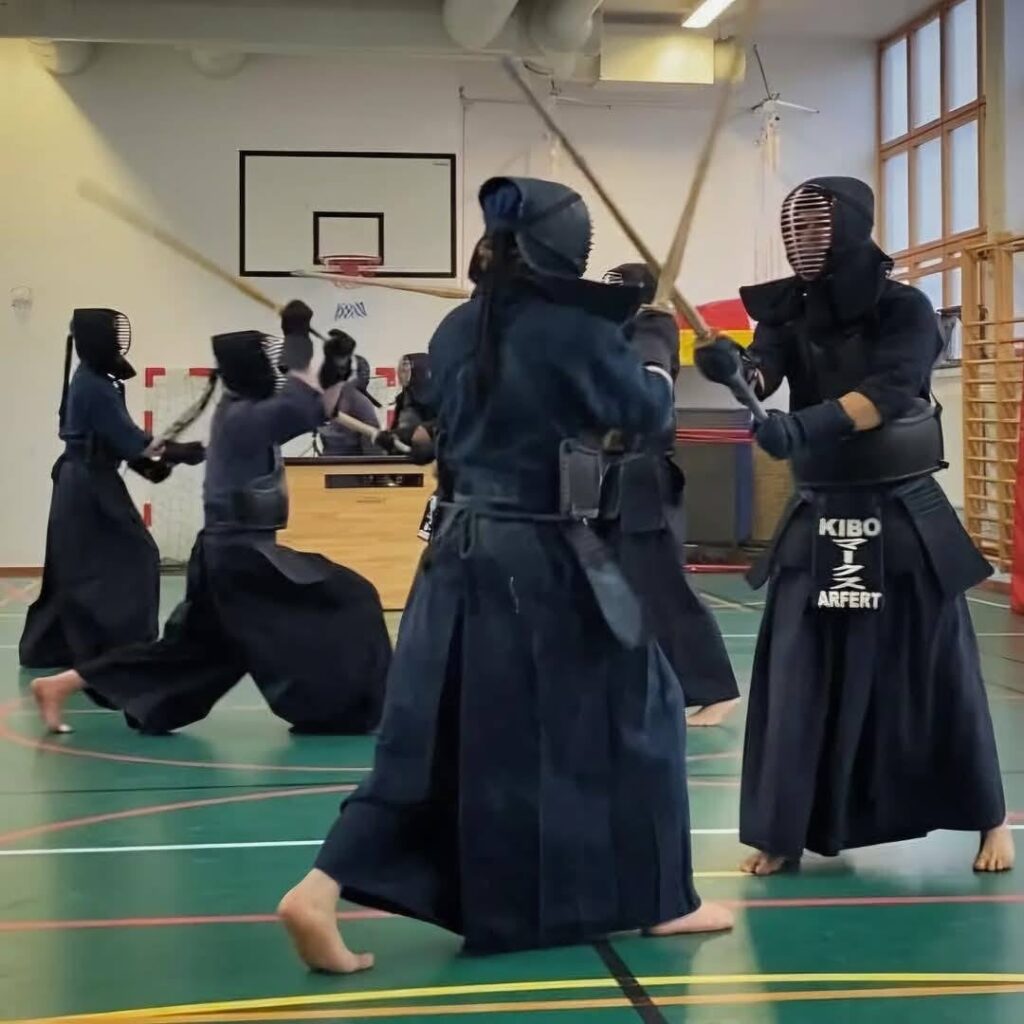
Impact of Online Training
Although the online practices are held just once a week, the ability to observe training on a continuous basis has allowed us to translate the team concept into actual practice more effectively.
While there are some variations depending on the season, we generally follow the same training structure throughout the year, and the impact of this consistency is significant. Making meaningful changes takes time, so continuing with the same type of practice over an extended period is extremely important.
Since the content of training is almost identical regardless of where players live, one of the key advantages is that when the team gathers for training camps or pre-competition warm-ups, everyone can join the session smoothly without confusion. As mentioned earlier, the shared videos also help players outside Stockholm build a clear mental image of the team’s approach.
Another benefit is that players who usually serve as instructors in their own clubs can use this time as an opportunity to focus on their own training. Many of the national team candidates hold leadership roles at their local dojos and often struggle to find time for personal practice. Being able to dedicate at least one session per week entirely to their own development is a major advantage, and it helps them sustain their motivation and commitment to competition.
Since this is a national team, players come together from various regions across Sweden, and they do not all live in the same area. Given these distances, I believe that online training is an effective way to build a shared mindset and strengthen the team as a whole.
Training outside of the online sessions is left to the discretion of each individual. For example, during the 2024–25 season, we incorporated strategies for facing Jodan opponents, but in some regions, no time was devoted to Jodan-specific practice outside of the online sessions. I see no problem with that. Each player focuses on different areas of improvement, so as long as they maintain the minimum core elements that we aim to achieve as a team, it is not necessary for everyone to follow exactly the same training program. However, if a player is unable to implement the essential points that the team intends to share, that is considered a negative in our evaluation.
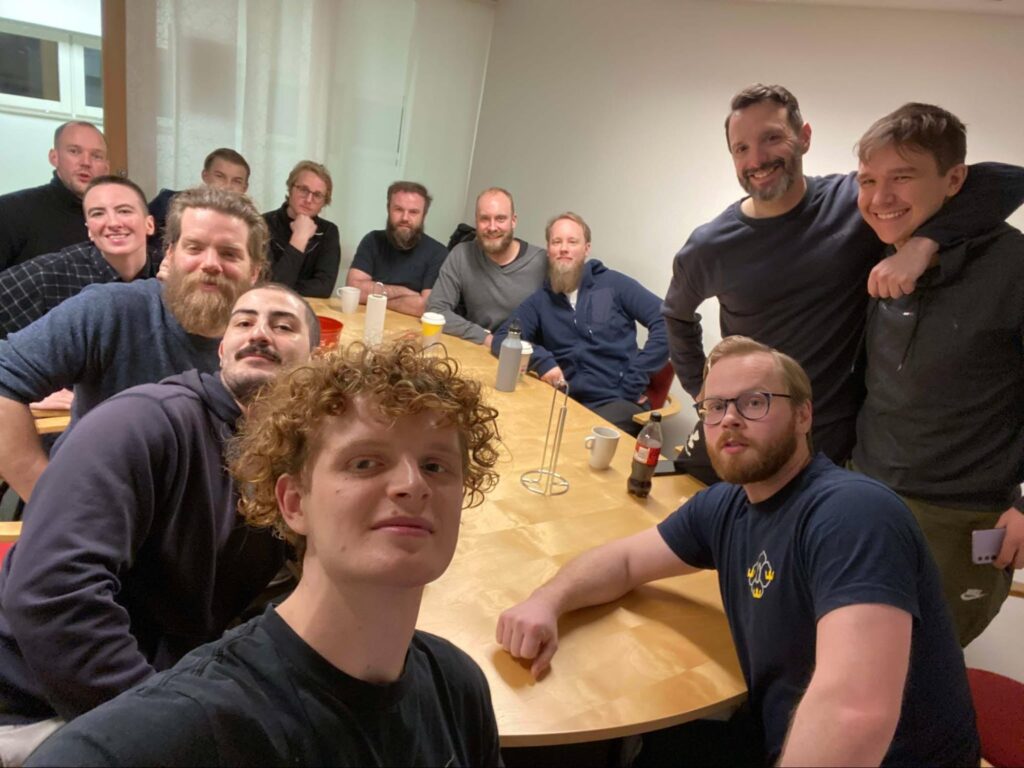
A team-building event was organized under the leadership of the two captains.
Areas for Improvement and Future Challenges
National team candidates not only participate in online training but also join regular meetings, which allows for the sharing of a large amount of information. This contributes to a higher quality of practice overall. One of the challenges we now face is finding highly motivated players outside of Stockholm and encouraging them to participate in training on a continuous basis.
Another issue arises in large training groups like those in Stockholm, where it is extremely difficult to keep track of every player. We currently address this by setting up smartphones at both ends of the dojo to record practice sessions, which I then review afterward. However, reviewing all of the footage takes a considerable amount of time. In the future, I believe it will become necessary to have additional staff members who understand the team concept and can share the responsibility of observing practices.
At present, the head coach of the junior team is a former member of the men’s team with many years of experience, which allows both the junior and senior teams to train under a shared team concept. Increasing the number of staff members, alongside recruiting more national team candidates, will be an important task moving forward.
Voices from the Players: The Good Side
- We follow every week a similar structure so every week only few new elements have to be explained. This makes the training sessions very intense and time-efficient. More specifically I find that I can track my own improvements better since we tend not to switch excercises that often. Furthermore, one more thing that has made this work well is that Arai sensei has a coherent plan in mind and there is a clear progression in the exercises. Once again, repetition is key and since we have done this for a long time now, we have managed to build a solid base of understanding in the group, as well as structure.
- i feel that the exercises that we do are both very educational and very fun.
- Another thing that i really like about the online trainings is the fact that we practice a lot of jōdan since that is something that we never do in other cases. I feel like i am very prepared to face a jodan player in a competition now. I like that there’s a focus on teaching “bottle necks”, stuff that normally aren’t taught in regular mixed Keiko. Like jodan, hikki. And also tying it all together into the fundamentals of tactics.
- I really like that we’re doing a lot off ippon-shobu with two groups, gives more match-experience with limited time, both good for mental focus and for tactics. As well as training judging. Since we implemented judging more broadly (when in line etc.) I find myself even more engaged and that could even be something to build upon further.
- I think the format that we have is very good and with our Monday meetings to complement the online training for discussions and talking about technical points etc we get a well rounded training covering all topics.
- Τhe online sessions first seem like a challenge, because the coach is not physically present. But the way it is organized in our team (using media such as film, presentations, written assignments and feedback) I experience it as a great benefit. These sessions have for me a quality that I have not experienced before in other training sessions.
- It has helped me develop technically but more than anything tactically and mentally.
- Even though I live far away from the team and my video sessions are together with local club members that are not part of the national team it has still made me feel like I train together with the team in a way. Even though we train remotely, these sessions have kept our kendo community connected. They help us stay motivated, support each other, and continue progressing together despite physical distance.
- Moreover, it hasn’t just benefitted me but also the larger kendo community in northern Sweden. Since different club members, even from other clubs, has helped by participating it has made everyone more aware of the efforts of the national team and they are more invested in my journey and the team’s journey. Their kendo has also improved. My improved skills and confidence as well as my success in the shiai-jo has also made more people look up to me. We hold regular training camps for the northern clubs and many people come there and I can clearly notice how they listen more to my advice. Even senior members in other dojos have personally asked me to teach them specific things. Things that I have been able to learn through video sessions with Arai-sensei. So, it doesn’t only help me personally but it helps build Swedish kendo of all levels.
Voices from the Players: Areas for Improvement
- I don’t really feel like there is much to change apart from the time when practice begins, but that is not so easily changeable and it doesn’t really bother me that much anyway. The sessions in Stockholm being so early and the lack of time to prepare beforehand with warming up increases the strain on the body.
- In uppsala since the practise is quite late it steals time from sensei’s family.
- High paced and many exercises might make it difficult for newer members to join a practice. But as long as you frequently train, this is not a problem. Since teammates will help teach newer members.
- The online training sessions have been crucial for us to understand and practice the philosophies that Arai wants to implement in the team. However, an unfortunate challenge with them is that we need someone to act as an intermediary (most often Styrbjörn), making it essential that this person fully understands the task. How they interpret and convey the instructions significantly impacts how the training is conducted. This will also be easier if there’s one person on site in the dojo who can understand these things at a decent level and help “translating” the sensei’s words and advice and if needed, show the exercises physically.
The thoughts of Aljosa, the player who inspired the start of the online training
My name is Aljosa Vuksanovic, and I was a member of the Swedish national kendo team from 2022 to 2024. During this time, I participated in two European Kendo Championships (EKC) and one World Kendo Championship (WKC). Throughout this period, I was coached by Mr. Ryo Arai, who held individual online training sessions with each team member, as most of us lived in different parts of the country. While we would occasionally meet at the training camps, most of our practice was done independently at our respective clubs.
My situation was somewhat unique because the club I belonged to had very few members, and the overall level of kendo there was relatively low. This made it challenging for me to adequately prepare for major competitions. However, thanks to the individual training sessions with Mr. Arai, I was able to maintain the level of kendo required for large competitions like the EKC and WKC. As a result, my performance was on par with that of the other team members.
I had online training sessions with Mr. Arai approximately twice a week, with each session lasting about one hour. Practicing alone presents significant challenges—not just in staying motivated, but also in pushing oneself to give 100%. Without an opponent, every cut feels less effective, as you’re cutting through the air. It’s not just about expending energy to make the cut but also controlling and stopping it, as there is no target to strike. Furthermore, practicing alone usually means shorter breaks, which increases the intensity of each session.
Mr. Arai was able to identify specific exercises that addressed these training conditions. These exercises significantly improved my kendo and helped prepare me for competition.
The focus of our practice was on foot movement, applying pressure, and varying rhythm during fights. We practiced in intervals of 30 seconds, 1 minute, 3 minutes, and 5 minutes. Although I was practicing alone, this method of training enabled me to compete and score ippons against some of the top players in Europe and the world. It also made me a stable link in the team, which gave both me and my teammates confidence.
Kendo is not a major sport in Europe, and many practitioners face similar challenges due to poor training conditions and a lack of strong opponents. My message to all kendoka is that, yes, it is possible to maintain your level and be prepared for competition even if you practice alone. However, it requires a specific and individually tailored approach to training, which I was fortunate to receive thanks to Mr. Arai.
Please Support the Swedish Team!
Kendo in Sweden has a long history, even by European standards. Sweden was one of the six countries that participated in the very first European Kendo Championships. Only seven countries have ever won the men’s team title at the European Championships, and Sweden is one of them, having claimed victory in 1989.
However, compared to countries like France, Germany, or the United Kingdom, the number of people practicing Kendo in Sweden is relatively small, and financial resources are also limited. Even so, we continue to find creative ways to train, focus on what we can do, and work hard to improve our performance.
We would be truly grateful for your support of the Swedish national team’s ongoing efforts and activities.
